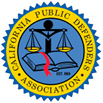Overview
There are a number of different drugs that people use for recreational purposes. Some of these drugs are illegal under all circumstances, while others may be legally used under some circumstances. Some drugs, such as marijuana, do not require much in the way of processing or manufacturing, while others such as methamphetamine require significant processing and manufacturing.
The manufacturing of drugs, when done in a laboratory setting, by a company in the business of drug manufacturing, subject to oversight and following all rules and regulations regarding the manufacturing of drugs is a relatively safe process. However, when that manufacturing is done outside of such a setting (e.g., in a garage or shed in a residential area) there are significant dangers that can lead to explosions, fires and a number of other hazardous conditions. For this reason and others, California law makes it illegal to engage in the manufacturing of drugs that gives rise to the potential for these hazardous conditions.
Heath and Safety Code Section 11379.6:
The law that prohibits the manufacturing of drugs in California is found in Heath and Safety Code section 11379.6. It covers the manufacture of a wide range of drugs, including (but not limited to) methamphetamine, PCP, hash oil, crack cocaine, LSD (a.k.a. "acid") and MDMA (a.k.a. ecstasy.) Violation of this statute is, in all cases, a felony.
Section 11379.6 does not single out any particular drug or class of drugs, and make its manufacture illegal. Instead what the law does it to make it illegal:
- For any person;
- To manufacture, process, convert, compound, derive or prepare;
- Whether directly or indirectly;
- Any controlled substance listed in section 11054-11058 of the Health and Safety Code;
- By means of chemical extraction or chemical synthesis.
As you can see, the law has a fairly broad application that can apply to any number of different drugs. However, there are a couple of significant limiting factors as well.
First, the law applies only to "controlled substances." It will not apply to any type of drug not specifically listed in the Controlled Substances Act (sections 11054-11058 of the Health and Safety Code.) That said, the Controlled Substances Act is fairly comprehensive, and will apply to just about every type of illicit drug people are familiar with.
The more significant limiting factor found in section 11379.6 is the requirement that the drug manufacturing be done by means of chemical extraction or chemical synthesis.
In simplest terms, chemical extraction is a process by which one or more chemicals or compounds are used to remove other chemicals or compounds from a material. For example, in the gold mining industry, the chemical cyanide is used to extract gold molecules in the mined ore. In drug manufacturing, a good example would be the use of butane to extract THC from marijuana, to make hash oil.
Chemical synthesis is the process of combining two or more chemicals or compounds to produce one or more new, more complex chemicals or compounds. For example, if you take sodium and chlorine and combine them, you get sodium chloride (i.e., salt.) This is a process that is necessary for the manufacture of drugs such as LSD, ecstasy and methamphetamine.
While the law is written such that it indicates that any person who uses either of these chemical processes to manufacture any controlled substances is breaking the law; that is not actually the case. California law can and does allow people to regularly use chemical processes to manufacture a wide range of controlled substances, provided those individuals (or, more likely the companies they work for) are properly licensed and regulated by the state. In other words, Health and Safety Code section 11379.6 really only applies to the unlicensed and unregulated manufacturing or controlled substances by means of chemical processes.
Hash "Honey" Oil Manufacturing:
Since the legalization of marijuana in 2016, the manufacturing or hash oil (also known as honey oil, hashish and other names) has become something of an outlier in the context of illegal drug manufacturing. Even though marijuana has been legalized, the manufacturing of hash oil still violates section 11379.6, and expose any person engaged in that manufacturing to severe criminal penalties.
It is also true that, under certain circumstances, it is now legal to manufacture hash oil for personal use. So, what is the difference between legal manufacturing and the commission of a serious felony?
There are really two different factors in play when it comes to the manufacturing of hash or hash oil.
The first factor is the amount manufactured. Under California law, a person may possess up to eight grams of concentrated cannabis (i.e., hash or hash oil.) So, a person may also manufacture up to eight grams of hash or hash oil. Producing more than this amount is a violation of Health and Safety Code section 11357. However, violation of this section is generally only a misdemeanor.
The second factor in play when it comes to the manufacturing of hash or hash oil is the method of manufacturing. There are actually a number of ways to manufacture hash or hash oil, some which use chemicals as solvents and others that do not. Those that do are engaged in chemical extraction, which brings them within the prohibition on drug manufacturing in Health and Safety Code section 11379.6.
One of the most common forms of hash manufacturing uses butane to produce hash oil, or more specifically butane hash oil ("BHO.") Except where permitted through licensing and regulation, this form of hash manufacturing is illegal; even if only eight grams or less is produced. Any person who manufactures hash oil by this method violates section 1179.6 and can face felony charges.
Manufacturing BHO is inherently dangerous, as the process involves letting excess butane in the oil evaporate. Because butane is heavier than air, it tends to collect and form clouds near the floor or other low-lying areas. These clouds can easily ignite from a spark caused by static electricity, friction or an open flame. This, in turn, can cause explosions and fires that can easily lead to property damage, injury or death.
Other forms of hash manufacturing, such as the use of ice water, high pressure or screening do not involve chemical extraction or synthesis and so are not prohibited under section 11379.6.
Offering to Manufacture Drugs in Violation of Health and Safety Code Section 11379.6:
To be convicted of most crimes, a defendant must attempt to engage in the prohibited activity. Simply offering to commit a crime is, in and of itself insufficient outside of a charge of conspiracy to commit a crime. Illegal drug manufacturing is somewhat different in this respect. Health and Safety Code section 11379.6(e) makes it a separate crime to merely offer to perform any act which constitutes the illegal manufacturing of drugs prohibited by section 11379.6(a).
While the penalties for offering to illegally manufacture drugs are less severe than for the actual manufacturing of drugs, the violation is still a felony in all cases, and can subject the defendant to a jail or prison sentence of several years.
How Is Illegal Drug Manufacturing Proven By a Prosecutor:
The means by which a prosecutor proves a violation of Health and Safety Code section 11379.6 are fairly straightforward. If the prosecutor can prove each element of the crime, then the defendant can be convicted. The elements the prosecutor must prove are:
- A person is engaged in manufacturing, compounding, converting, producing, deriving, processing or preparing a controlled substance;
- Directly or indirectly;
- By means of chemical extraction or chemical synthesis.
Penalties Imposed Upon Violating Penal Code Section:
Many of the crimes prohibited by California can subject a defendant to either a misdemeanor or a felony charge; depending on the particular facts and circumstances of a case, and the discretion of the prosecutors and the judge. Illegal drug manufacturing prohibited by Health and Safety Code section 11379.6 is not one of those crimes. In all cases, a violation of the statute will result in a felony charge. In fact, the penalties for violating section 11379.6 are particularly severe. They are:
- 3, 5 or 7 years in state prison; and
- A maximum fine of $50,000; and
- Up to 5 years formal probation
In addition to these penalties, there are a number of other penalties and penalty enhancements (most of which involve additional prison time) which can be imposed if certain conditions are met in committing the crime.
Offering to illegally manufacture drugs is related to the crime of illegal drug manufacturing, but is, in fact, a separate crime with its own penalties. These penalties are not subject to any of the aggravating factors and sentence enhancement available for the actual manufacturing of drugs. The penalties imposed upon conviction are:
- 16 months, 2 or 3 years in county jail or state prison; and
- Up to 5 years formal probation
Aggravating Factors and Sentence Enhancements for Drug Manufacturing:
Health and Safety Code section 11379.6, 11379.7 and 11379.9 contain a number of additional provisions that will enhance the penalties imposed upon conviction for illegal drug manufacturing, or serve as an aggravating factor when determining the sentence imposed upon conviction.
Aggravating Factors:
An aggravating factor does not impose an additional penalty upon conviction, but rather makes it more likely that the penalties imposed will be at the higher end of what is provided for by law. In the case of illegal drug manufacturing, the prison sentence can be as low as three years or as high as seven years. Also, the amount of the fine imposed can be as high as $50,000.00 but can also be for a lower amount. The number and severity of any aggravating factors in a particular case can persuade a sentencing court to impose penalties in the middle to high-end of the range of possibilities when they would otherwise be inclined to impose penalties at the low end.
Health and Safety Code section 11379.6 enumerates some specific circumstances that a sentencing court either can or must consider as aggravating factors:
- If a minor, under the age of 16, resides in the same structure where illegal drug manufacturing was taking place; the sentencing court must consider that an aggravating factor. However, this applies only to the manufacturing of methamphetamine, and only if the defendant does not receive a sentence enhancement under section 11379.7;
- If illegal drug manufacturing took place within two-hundred feet of any structure where another person (not involved in drug manufacturing) was present, or any occupied residence; the sentencing court may consider that an aggravating factor (an occupied residence is a structure where someone lives, whether or not they are home at the time.) Again, this applies only to the manufacturing of methamphetamine, and only if the defendant does not receive a sentence enhancement under section 11379.7; and
- If the illegal drug manufacturing was taking place within three-hundred feet of any structure where another person (not involved in the drug manufacturing) was present, or any occupied residence; the court may consider that an aggravating factor. This applies only when the illegal drug manufacturing was making use of volatile solvents for purposes of chemical extraction of concentrated cannabis (i.e., hash oil, a.k.a. honey oil or BHO.)
Sentence Enhancements:
Sentence enhancements, unlike aggravating factors, can add prison time or other penalties to a sentence; beyond what is otherwise permitted as the maximum under a statute. In the case of illegal drug manufacturing, sentence enhancements are provided for under sections 11379.7 and 11379.9, and all provide for additional prison time, but no other additional penalties. Whereas some of the aggravating factors contained in section 11379.6 are permissive (meaning the sentencing court may apply them, but is not required to,) the sentence enhancement found in sections 11379.7 and 11379.9 are mandatory, and must be imposed if the conditions set out in the statute are met. Also, sentence enhancements under sections 11379.6 and 11379.9 are not either/or propositions. Either one or both sentence enhancements can be imposed. Those potential enhancements are:
- If a minor, under the age of 16, is physically present when the illegal drug manufacturing takes place, the sentencing court must impose an additional, consecutive (meaning it starts when the original sentence ends) term of two years in prison. This applies only to the manufacturing of either methamphetamine or phencyclidine ("PCP");
- If a minor, under the age of 16, suffers what is known as "great bodily injury" (i.e., an injury that is significant or substantial, not trivial or minor) as a result of the illegal manufacturing of drugs, the sentencing court must impose an additional, consecutive term of five years in prison. Again, this applies only to the manufacturing of methamphetamine or phencyclidine ("PCP"); and
- If any person (i.e., not just a minor under the age of 16) not involved in the illegal drug manufacturing is killed or suffers great bodily injury as a result of illegal drug manufacturing, the defendant will receive an additional one year, consecutive sentence enhancement for each person injured or killed. This applies only to the manufacturing of methamphetamine and phencyclidine ("PCP"). However, a defendant cannot receive this sentence enhancement if they are already receiving a five-year sentence enhancement under section 11379.7.
There are also additional, potential sentence enhancements that can be imposed, depending on the quantity or amount of illegal drugs manufactured. These potential sentence enhancements apply only to the manufacturing of methamphetamine, phencyclidine ("PCP") and gamma hydroxybutyrate ("GHB").
- If the illegal drugs, in solid form, exceed one pound, or three gallons in liquid form; an additional, consecutive prison term of three years can be applied;
- If the illegal drugs, in solid form, exceeds three pounds, or ten gallons in liquid form; an additional, consecutive prison term of five years can be applied;
- If the illegal drugs, in solid form, exceeds ten pounds, or 25 gallons in liquid form; an additional, consecutive prison term of ten years can be applied; and
- If the illegal drugs, in solid form, exceeds 44 pounds, or 105 gallons in liquid form; an additional, consecutive prison term of fifteen years can be applied.
Finally, having prior, drug manufacturing, selling or transporting convictions can also result in the imposition of additional, consecutive prison terms as a sentence enhancement upon conviction for illegal drug manufacturing. For each prior conviction (whether or not those convictions resulted in prison time,) a defendant can receive an additional, three-year prison term. These sentence enhancements can apply regardless of the type of illegal drug being manufactured.
Common Defenses to -Charges of Drug Manufacturing:
Illegal Search and Seizure:
In California, and throughout the country, police and other government actors are prohibited from conducting searches of private property, or seizing individuals or property without a warrant. If a police officer, or someone acting as their agent, searches an individual's property and finds evidence of illegal drug manufacturing, but does not have a warrant; any evidence that is found must be excluded at trial.
Similarly, even if police do obtain a warrant to search an individual's property, that warrant must be supported by affidavits and evidence that demonstrate what is known as probable cause. If a skilled defense attorney can show that there was no probable cause supporting the warrant, the effect will be as if these was no warrant to begin with.
Illegal search and seizure is not an affirmative (direct) defense to a charge of illegal drug manufacturing (or any other crime for that matter,) but is rather a way of preventing the prosecution from proving their case beyond a reasonable doubt. It does this by eliminating some or all of the evidence a prosecutor uses to prove their case. However, this type of defense will not, generally, work to exclude a confession by the defendant or other witness testimony; so whether or not the exclusion of evidence will work in a particular case will depend on the nature and extent of evidence in that case.
Drug Manufacturing Not Initiated:
In the case of offering to manufacture illegal drugs, the crime is committed once the offer is made. The crime of actually manufacturing illegal is more involved, and must actually include taking steps in the manufacturing process. For example, if an individual merely purchases or possesses the materials necessary to manufacture illegal drugs, although they may be guilty of the possession of precursors, they have not violated Health and Safety Code section 11379.6. Likewise, if they have all the equipment needed to manufacture illegal drugs, but have not used that equipment; they have not violated the statute.
Innocent Bystander:
Illegal drug manufacturing can be done in any space large enough to accommodate the necessary materials and equipment. Frequently, the manufacturing takes place in a home or garage. If a person happens to be visiting in another person's home where illegal drug manufacturing is taking place, and that home is raided by police; it is most likely that everyone (other than small children) present at the time will be arrested and may be charged with illegal drug manufacturing. If a defense attorney can show that a particular individual was merely present in the home and had nothing to do with the illegal manufacturing (especially if they were unaware of it,) then that defendant will likely not be convicted of the crime.
How We can Help:
David Foos has been active defending people accused of crimes for over 40 years. David first served as a Deputy Public Defender, and then was appointed to the Sacramento Superior Court Bench as a Judicial Officer. David has defended numerous cases of drug manufacturing and other drug crimes, and is highly experienced in obtaining great results for his clients. David will bring all his experience, his knowledge, and his numerous contacts into play in obtaining the best possible outcome on your case. Do not hesitate to call our experienced Sacramento criminal lawyer at 916-779-3500 or contact him via email at Contact@foosgavinlaw.com. The initial consultation is at no cost to you.















